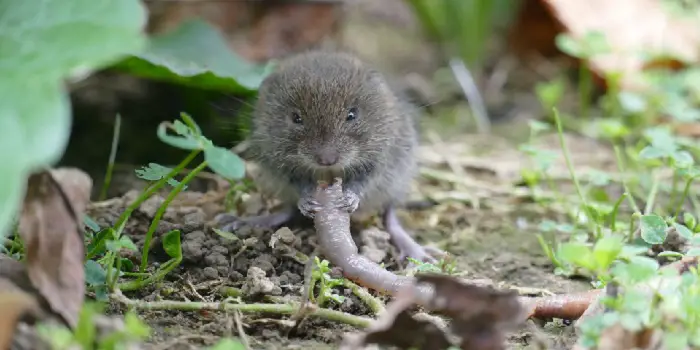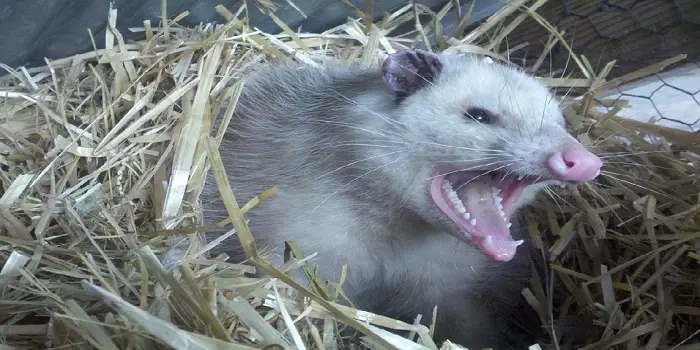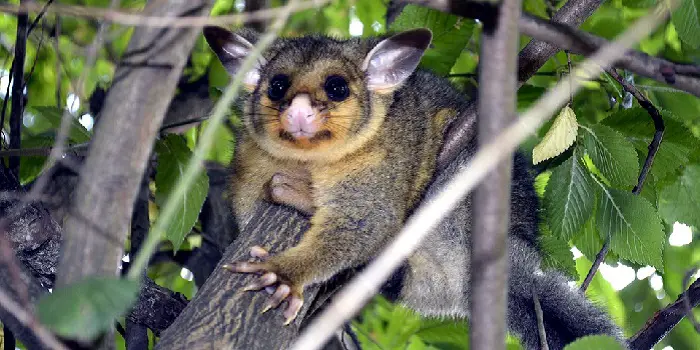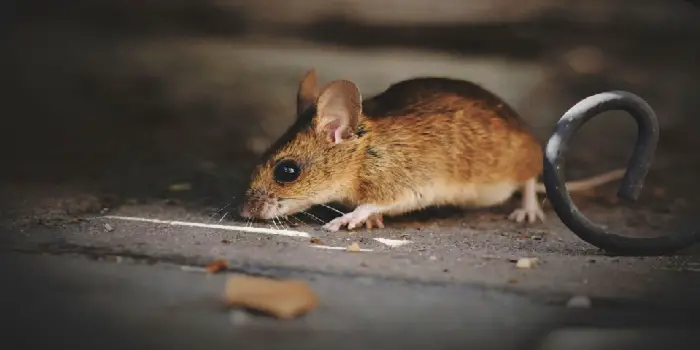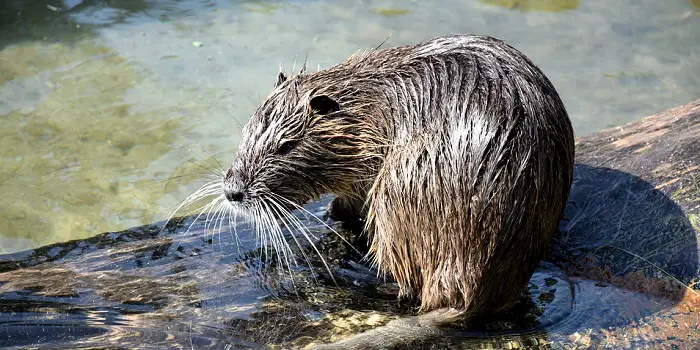
Beavers are considered to be the second-largest rodent in the world.
And most of them are found near the stream bed.
They have a reputation as friendly and fun woodland animals who mind their own business and cut down a lot of trees.
As nocturnal animals, they spend much of their day asleep in their dams, choosing the night to hunt, build, and refurbish their dams.
Since they mostly occupy wetland areas, most people don’t interact with beavers on a regular basis.
However, beavers can still be a concern for certain people, especially those who live on hunting land or other wooden areas near a river or stream.
Today, we explore what, if any, dangers beavers pose and how to prevent them from happening.
Why Are Beavers Dangerous?
Beavers are not aggressive animals, but they will stand their ground if confronted.
A few properties that make beavers dangerous for humans as well as pets are…
1- Can Attack
They have sharp teeth, strong tails, and a fierce temper that makes them capable of causing a lot of damage to humans and pets who they feel pose a threat.
Beavers are also timid creatures who don’t enjoy human interaction.
But when in the mood to attack, they will first send a warning sign to them by growling and hissing.
When in water, beavers usually slap their tails on the water surface to frighten away other animals. If not frightened, they can attack these animals.
2- Are Territorial
One other thing that makes beavers dangerous (aggressive and violent) is their territorial nature.
This simply means that they can go to any lengths while protecting their territories.
Most of the time, it’s also seen that beavers mark their territories by scent mounds that are made from debris and mud.
This will help them defend their territories from any unusual activity or unfamiliar scent from other animals, pets, or humans.
3- Can Carry Rabies
Lastly, beavers, like many other pests, may carry rabies, tularemia, and parasites.
This again makes them a serious threat to pets and humans.
Rabies is a kind of virus that is often found in mammals. It can spread to others through their bites and body fluids.
How to Tell if There is Beaver Present?
Since beavers are nocturnal, it’s hard to spot them directly if they are present inside your property.
However, signs of activities left behind can certainly help you recognize their presence.
Similar to artifacts (signs of human activities), you can check for these biofacts (signs of activities by non-human organisms) around your property, woody vegetation, and plants to confirm whether there is a beaver (or group of beavers) present.
- Cuttings or gnawing traces on branches of woody plants, bushes, and trees.
- Felled trees or stems of larger bushes due to excessive gnawing of the animal
- Decorticated sticks, debarked branches, and food rafts for food storage near the riverbank
- Visible exit spots, burrows, scent mounds, plugged culverts, trails, or runways
Some of these beaver bite marks and signs may not be present near your home, but you can see them around your property.
Also, these beaver signs will be most commonly seen during autumn and winter when they use wood, lodges, and plants most for their different activities.
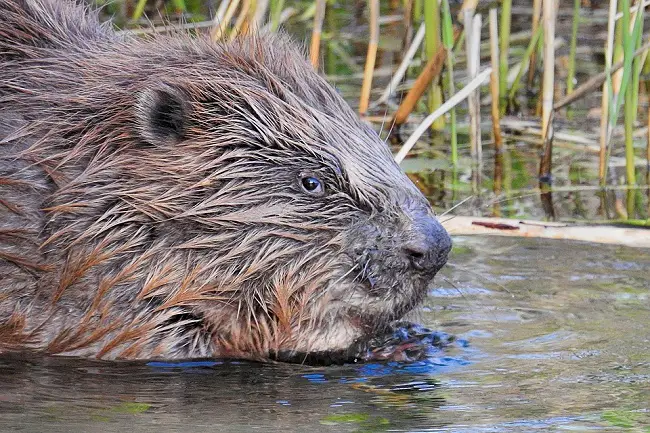
Why Do Beavers Build Dams in Water?
Beavers are among the most intelligent creatures – they are often nicknamed ‘Nature’s engineers.
But on the other hand, beavers prefer seclusion to any other environment because of which they always try to change the landscape of wherever they live.
In the event that their wetland homes are stripped or destroyed, they will retreat to the outskirts of residential areas and build dams to create a safe cover for themselves.
By building dams, they are trying to protect themselves and their young against the predators such as wolves and bears.
Beaver ponds and dams are good for them and our ecosystem, especially for a variety of wildlife such as ducks, muskrats, minks, and others.
Beavers, through building their dams, are also said to improve water quality by making it cleaner.
These dams, however, create a lot of problems for local homeowners. They can cause flooding, and excess tree felling, along with crop and farm damage.
For these reasons, many people try to remove or shoo beavers off their land before they can create dangerous situations.
You may want to consider consulting a pest professional to try and begin the beaver removal process as soon as you see them on your property.
What to Do About Beavers – How to Stop the Damage?
Are you pissed off with the presence of harmful beavers wandering on your premises?
If yes, then let me tell you that you are not alone! Beavers can make any pond or lake their habitat.
Hence, a suitable way to stop them from transforming your freshwater body into their habitat is to follow a rigid control plan which comprises deterring, trapping, modification of the habitat, and its removal.
Irrespective of how unmanageable the beavers have, our step-by-step guide will help you get rid of them completely.
1- Wrap Trees
As beavers have constantly growing teeth, a major part of these nocturnal critters is spent on chewing trees- planted on your property.
In fact, they are the kind of rodents that love to feed on barks, leaves, and flowers.
To avoid beaver damage, wrap trees and shrubs with a hardware cloth or screen with a height of at least 3 feet.
This way, the beavers won’t be able to chew/cut down the trunk of trees easily (which they use for food and building material).
Thus, making the habitat less preferable for these destructive critters and moving them away to another location.
Remember to wrap and protect all the trees and bigger plants on your property, as this will make the beavers relocate faster.
2- Fencing
You can also string electrical wires or implement fences or shields to keep beavers off your property and protect your family and pets from them.
Fencing is in fact a good solution if you want to stop the nasty beavers from coming to the groves, forest, and other nearby locations.
Installing a fence to an entire area like your pond or your yard would be easy and more cost-effective than fencing or wrapping individual trees.
Since these rodents are not good at climbing, you will not need to fence beyond 4 ft.
To be on the safer side, make the fencing as high as 5 ft which would be more than enough to block beavers’ access.
3- Beaver Trapping
Another way to remove active beavers from your property is to utilize beaver trapping.
If beavers have started collecting culverts, constructing dams, and creating water problems, then you should start trapping them.
Beaver trapping is an environmentally friendly and humane beaver removal system that uses traps to capture and rehome beavers to safer environments.
Place the animal trap near the pathway where you usually see the beavers wandering.
Use some natural vegetation material (wood chips or dirt) to cover the trap bottom.
Also, make sure that you use baits like branches and twigs soaked in poplar oil which is considered one of the best effective baits for trapping the beavers.
Remember, the best time to set a trap for beaver is in the evening – since they are nocturnal critters.
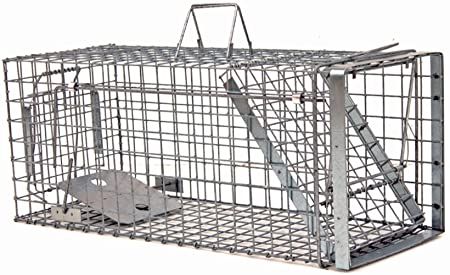
What are the Different Types of Beaver Traps to Use?
There are different types of traps and trapping techniques used for controlling pests.
But when it’s about capturing a beaver in a trap, you will need to look for the one that is permitted in the US state you are living in.
Some of the most popular ones include:
1- Foothold trap
A foothold trap (also called leg hold trap) size No. 3 or larger is recommended for trapping beavers.
It consists of two metal jaws that get closed by a spring as soon as the animal steps on the triggering device of the trap.
Make sure if you are using this trap for beavers, keep them near to the place where they are most active.
You can also place the leg-hold trap underwater.
Just ensure that you anchor it more than 4 feet deep which will make the beaver drown and die.
2- Cage traps
Many people prefer using cage traps that are designed for capturing raccoons.
If you want to make use of them ensure that it is at least 10 x 12 x 3 inches in size.
Also, place it near the land where beavers usually climb.
3- Snares
The snare is a type of beaver trap that is extremely cruel.
Made up of a cable that is formed into a loop, it consists of a locking mechanism to trap the animal completely around its body.
While it is mainly used to capture foxes, wolves, and coyotes, you can use it for beavers to trap them around their runways, entrances, or dens.
4- Clamshell trap
Unlike snares, a clamshell trap does not work to kill the captured animal.
These types of traps require bait to capture the animal and are available on the market with brand names like Hancock and Bailey.
The drawback of using them is they can be costly to buy and can be too heavy (due to a sturdy metal frame) to carry long distances.
5- Conibear type trap
Conibear type of trap is again a cruel one as it kills the beavers instantly.
The good thing is it’s very effective and does not offer the animal time to escape.
It is designed in such a way that you can set it underwater or half submerged in a water pond.
Tips for choosing the right trap:
Getting the right type of trap is a key to successfully trapping the beaver in a cage.
For good reasons, I don’t recommend using a trap that kills the animal instantly.
So, when buying, make sure the trap is made up of sturdy stainless steel material.
Plus, it should be extra-large and comfortable for the trapped animal.
This also means that the trap you choose should have smooth internal edges that will avoid injuring the animal when it’s trapped inside and tries to escape.
What are the Best Beaver Repellents Available to Buy?
Though these animals are essential for the environment, you still need to control them on your property before they do big damage.
If you want an effective solution to keep them away from your yard, you can make use of some effective repellents.
Some of them are:
a) Ro-Pel
Ro-pel is a reliable and secure way to get rid of these destructive pests. It is a ready-to-use product, so don’t mix any other chemicals.
You may feel sad seeing your beloved trees and property get damaged. But now you no longer have to worry about it.
This product works as a result-generating solution to prevent foliage damage from beavers and other pests and rodents.
The good thing is it has an awfully bad taste which is effective even in the rains.
b) Bonide animal repellent
It is an effective solution that repels beavers in 3 big ways: through their taste, smell, and touch.
It safeguards your property and makes the beavers escape the treated area and avoid returning to it.
c) Nature’s beavers defense
It is ecologically secure and doesn’t harm your plant or family in any way too.
It has an irritating smell which is unpleasant to the beavers.
Just spread the product in the areas where beavers are seen. Keep doing this for a week.
But keep in mind that it should only be used outdoors.
d) 4 The Birds
4 The Birds is a helpful remedy that prevents beavers from eating your trees.
Though crafted for bird control, this repellent also stops beavers from causing damage to your trees.
Once the solution is effectively applied to the trees, the beavers relocate where untreated trees are present.
It is an irritable product that repels them from chewing your trees. The good thing is it doesn’t harm the tree or beaver as it isn’t poisonous.
e) Predator urine scents
Beavers are usually afraid of their natural predators, which include coyotes, foxes, bobcats, otters, and great-horned owls.
So, if you want, you can use repellents like predator urine scents of fox, coyotes, snakes, etc.
In addition, the smell of ammonia, mothballs, and garlic is also known to repel beavers as they hate them.
Other Related Questions:
Can beavers be pets?
American beavers are no doubt among the cutest mammals in North America.
And for this reason, many people get tempted to keep an orphaned beaver as a pet when they see them wandering around their property.
But remember, adult beavers are wild animals, and they can be vicious too.
It’s therefore not recommended to keep them as a pet in your home.
Are beavers the same as Castoroides?
Species of Castoroides went extinct during the Pleistocene–Holocene Transition (about 11,500 years ago).
These giant beavers were much larger than modern beavers and were one of the largest known rodents in North America.
What does a beaver eat in the wild?
Beavers like to eat the bark, stems, twigs, and buds of a tree.
The trees that they like are mostly birch, black alder, poplar, cottonwood, maple, willow, and aspen.
Besides, they also like to feed on plants such as mushrooms, ferns, soft grasses, roots of water plants, apples, etc.
On average, it’s estimated that an adult mountain beaver can eat around 0.5 kg/day of woody forage as food.
This quantity is enough to provide them with around 1200 kilo-calories (5000 kilo-Joules) of energy per day, which they often require for their daily activities.
Why are beaver pelts/fur so valuable?
Beavers were traditionally exterminated for their stylish fur by humans for long.
The pelt of a beaver was often used to make the felt hats for Europeans that were greatly in demand in the early 1600s.
Today in modern times, beavers’ fur and pelts are still in demand for making various items in the fashion industry and also for eating – beaver is safe to eat and is one of the healthiest foods available.
What are beaver teeth made of – Why are they orange?
Unlike other rodents that have magnesium in their tooth enamel, beavers’ teeth are made of iron.
Because of the hard enamel with the iron, beaver tooth appears to be orange, yellow, or brown.
In addition to being strong, beaver metal teeth are also very sharp.
Plus, they also have the ability to self-sharpen their teeth as it wears away.
And that all makes them so good at chewing through wood stuff or trees.
The Conclusion
Hard to believe but true – a single beaver is capable enough of felling an 8-foot large tree in just 5 minutes.
They are especially busy at night and can prove to be very destructive if they happen to enter your green lawn.
Several tricks have been formulated in the past few years to deter beavers, but only a few have shown results.
No matter what method you choose, you shouldn’t go for any dangerous poison to kill and get rid of beavers.
While trapping may get very expensive, the natural deterrents and repellents mentioned above can effectively resolve your issue.
Pest professionals are well trained to use humane techniques for removing annoying and potentially dangerous pests like beavers.
So, reach out to them today to get a consultation on your pest problems if it goes really serious.
Share the post "Are Beavers Dangerous to Humans – How to Stop Them?"

Welcome to ProShieldPest.com. I am Tina Jones. I have been working as a pest removal professional in Winslow, Arizona lately. At present, I love to spend my time with my family as a retiree.
Here I share all my knowledge and experiences to help people understand better how they can stop pests at their homes without actually killing them. Hopefully, the information you will find here will help in safeguarding your home! You can check more about me here.

